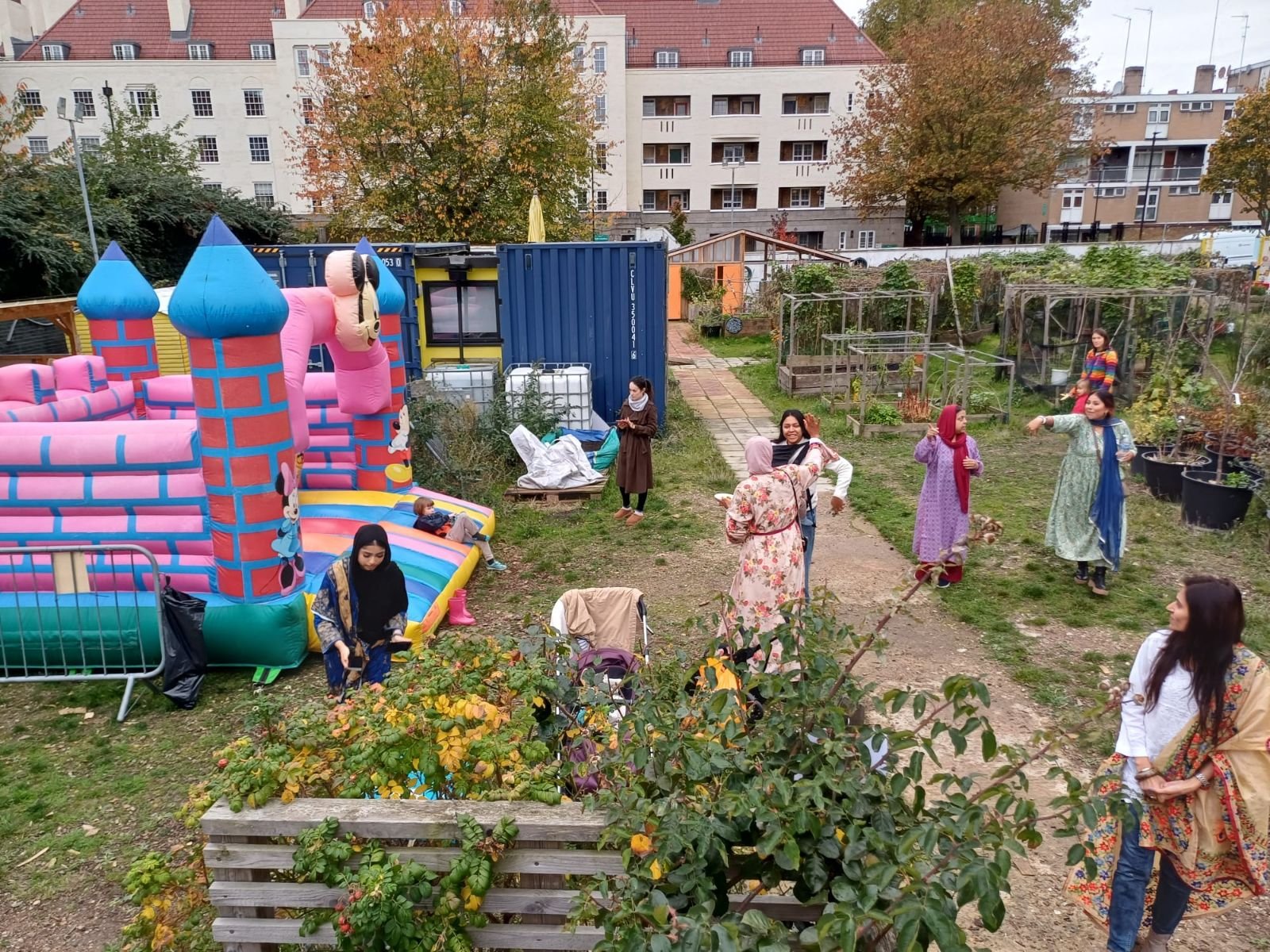FROM THE WILD WOOD TO THE URBAN FOREST
Living in the city, trees are a precious resource so often overlooked and neglected, yet are a defining character of our streets, highways and parks. For those of us who love them, they bring nature close to us, and we may get to know a few intimately if we pass them each day or watch them changing through the seasons from windows and balconies. We become passionate about trees and for good reason. They provide shade and dappled light, habitats for a multitude of fauna, fruits in autumn, and of course capture carbon, mitigating the effects of urban heat islands and influencing local air quality by altering the deposition and dispersion of pollutants.
Tree cover across the UK is only 13% compared to a European average of 38%, and we have a long history of deforestation. Wars and incessant building have fuelled their demise, and across the countryside as farming industrialised, coppice and hedgerows were uprooted to make way for machinery and monocultures.
The UK has some distinct woodland ecologies, from the beech forests of the south east of England growing on shallow chalks, to the scots pine forests on thinner acidic soils and the oak rich temperate rainforests that still exist in wet valleys of the south west and in west Wales. Trees are great indicators of underlying geologies and soil substrates if you know how to read them.
Across Britain huge tree planting schemes are now underway, and the concept of carbon offsetting has become a way of justifying so many other types of unsustainable activity. Miyawaki forests, a method of planting saplings densely so they create a microclimate that supports rapid growth is being taken up by communities who want to fast track woodland without waiting for natural rewilding to take place.
Planting trees is always a positive, but do we actually think of the tree and what their needs really are? We used to know them intimately, reading the complex treescapes around us searching for vital clues in the days before books and google maps.
Let’s wander along a winding woodland path, amongst hornbeam and sessile oak, ash, beech, wild service tree and rowan, hawthorn and chestnut, holly, yew, birch and alder, limes and willow, scots pine and silver birch, sycamore, whitebeam and wild plum and discover that each tree has its likes, its preferences for alkalinity, acidity or moisture, its growing companion that sits nicely beside it without competing, its ally in life. Through an underground network of fungal mycelium, trees communicate and support each other, sharing nutrients, warning of pests, helping the growth of seedlings, cooperating as a system of entities rather than individuals standing alone.
Suzanne Simard, one of the ecologists working to unravel the mysteries of the ‘wood wide web’, the network of fungal mycelium growing into and around the trees themselves identified ‘mother trees’ or hubs that form a local centre of information - often the largest tree in the wood that supports her seedlings by connecting them to the network as they germinate.
Ancient woodlands have the richest and most diverse ecologies, and are protected environments for numerous species. Some plants really only grow in these places, entangled in the knotted networks of roots, fungi and history of use, as many of the ancient woodlands were closely managed to sustain us in multiple ways. The coppicing of hazel and chestnut provided timber for building and fuel, food for pigs who were fattened on autumn acorns, herbs for healing and barks for tanning and lashing. Woods were places of mystery too, with sacred groves, as home of the fertile Green Man, with oak leaves tumbling around him, or the sinister Woodwose, a more shadowy figure, both embodying the spirit of the forest, part terror, part wonder.
Epping Forest, Queens Wood and Sydenham Hill Wood are some of London's remaining ancient woodlands, providing vital habitats for Stag beetles, White and Purple Hairstreak butterflies, Nuthatches and Green Woodpeckers which thrive in them. As old trees fall, areas of light open up and in the glades groundcover plants like Yellow Archangel, Wood anemone, Herb Paris and Enchanter's Nightshade grow.
But where does all this leave the urban forest, that motley collection of singular standing trees across the city, grown in artificial clusters that appeal to the limitations of roadside life or to our aesthetic preferences.
We fail to see the wood for the trees - our focus has been on trees, and not the tree community or woodland, so stranded from their support network and without the ability to reach out through their roots and connect into the wood wide web, urban trees often exist in conditions of extreme stress. They have an easier life in parks, yet can still be vulnerable to physical abuse and constant change as populations grow. Street trees get splashed with salty water, have their roots compacted or lopped off for roadworks.
Cankers, wood borers, chlorosis, frost cracks and epicormic growth are all symptoms of their struggle. A recent spate of tree felling happened in Sheffield, the city losing hundreds of trees due to new maintenance contracting that saw only the negatives and gnarly roots, but not the benefits of trees.
Despite the tough conditions, urban trees can survive. Our attitudes to them are changing and we know now that just looking at a tree from your hospital bed can help you heal more quickly. We know how they purify our air and buffer unsightly fumes and views, host multitudes of other urban life forms and provide us with a sense of continuity through the seasons as leaves fall and sprout.
Along with good practices of planting at the right time of year, providing the right root conditions and soil, and correct irrigation over time there are some positive new approaches to urban tree care that include a stronger focus on the relationship with mycorrhizal fungi, longer maintenance contracts, utilising rain gardens and street water runoff for irrigation of moisture loving tolerant species like Alder, and better root training of trees destined for the streets. The concept of rewilding has become a buzzword, letting nature regenerate naturally without our intervention. Inspired by these natural patterns we can learn how to design urban ecosystems that support tree growth.
As a symbol of urban regeneration, our 100 oaks from Ackroyd and Harvey’s Beuys Acorns project remind us of his desire to make cities become ‘forest like’. And like us, trees thrive in communities. Intermingled and adjacent to life forms similar or not the same, each finding its own niche and place to grow, each offering its unique qualities as a part of the whole. Perhaps we need to recognise our urban forest as a community hindered by poor decisions and choices made by us, admire the wild buddleia on the wall for being a survivor and doing its own thing, feel compassion for a mighty but lonely plane tree standing in solitude on a town square and take it upon ourselves to lobby more for tree friendly urban design that brings the magical and transformative qualities of the woodland to the city.
Some urban tree links:








Meet our second cohort of earth build trainees! Their focus has been on all things wood, including green woodworking and the timber construction of the kitchen. They have learned on the job, while working on our sustainable natural build construction project to create our first permanent community garden, at the #TriangleSite.